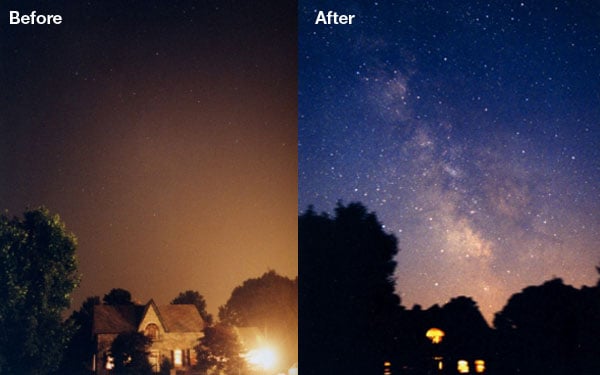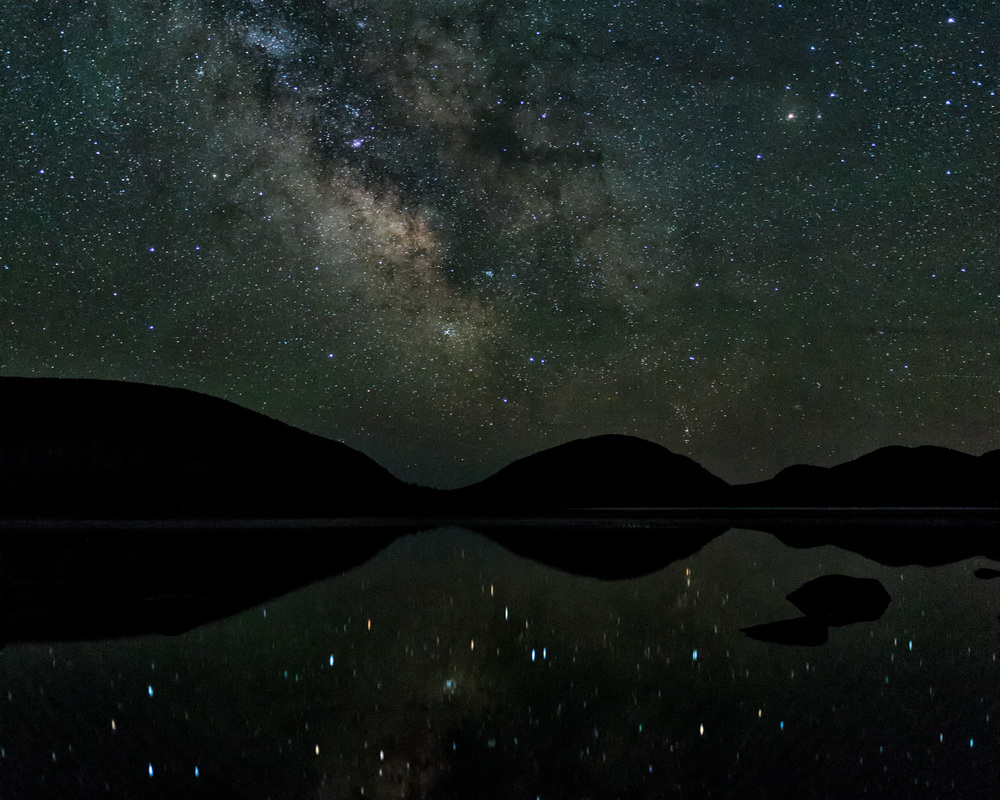What Is Light Pollution?
My bedroom at home is on the top floor of our house. It sits back from the main road and there are no streetlights that flood my room with a hazy orange glow. Instead, the only thing I can see at night is the distinct outline of the pine trees that line my yard. Sometimes I pop the screen of one of my windows out and crawl through my open window onto the roof so I can view the unobstructed night sky. The Big Dipper is always easily visible on a clear night, as is Orion, and even the Seven Sisters, faint and clustered together. I can even see the Milky Way. This, I have come to realize, is a rare view for most of the world’s population.
The International Dark-Sky Association defines light pollution as “the inappropriate or excessive use of artificial light,” a recently new phenomenon that comes as a side effect of industrial civilization. This can have serious environmental repercussions for humans, wildlife and the climate. Below are a few components of light pollution that the International Dark-Sky Association focuses on:
- Glare: excessive brightness that causes visual discomfort
- Skyglow: brightening of the night sky over inhabited areas
- Light trespass: light falling where it is not intended or needed
- Clutter: bright, confusing and excessive groupings of light sources
While these components of light pollution are present across the country, coastal areas of the world are some of the areas that may suffer the most due to an increase in light pollution. Organisms small and large are impacted by the bright lights that can be seen from miles away up and down the U.S. coasts and coasts around the world. A study done by the University of Exeter and Bangor which monitored the effects of coastal lighting on larvae of marine invertebrates, found that artificial light both suppressed and encouraged colonization of several small species of sea squirts and marine worms. The results appear to indicate the unwanted colonization of these organisms on man made structures such as docks and marinas, but also an alteration of the abundance of these species in other habitats where they occupy important environmental niches. This study found that not only the behaviors of these organisms were altered, but that artificial light could actually cause a disruption in the development of ecological communities in the marine environment.
In addition, it is becoming common knowledge that coastal light pollution greatly impacts sea turtles and their nesting habitats as seen in studies done on loggerhead, leatherback and green turtles. The coastline and offshore waters of New Jersey offer a home to a few species of sea turtles, some of which are listed as endangered. These animals prefer a quiet, dark beach on which to nest and lay their eggs. However, with increasing numbers of beachgoers each year and the urbanization of coastal environments, lights from these developments discourage the females from nesting. These lights near shore can also harm the hatchlings if in fact the mother does choose to nest on the beach. Disoriented due to the artificial light, the baby turtles can wander inland and subsequently die of dehydration or other predators. The reason the light is so important is because these hatchlings have an innate instinct that leads them in the brightest direction—historically this has been the moonlight reflecting off the ocean. Excess lighting messes with that instinct and can have a devastating impact on these endangered turtles.
Other animals impacted by bright, artificial night lighting are seabirds. While I’ve heard many people walk along the beaches and gripe about the laughing gulls that swoop down to steal food out of your hand, these birds are actually very important to the environment. Often times, seabirds have some of the longest migrations on the planet and continuously return to the same areas of the globe year after year to feed, nest, and raise their chicks. These birds are also extremely good indicators of climate change and ocean health. Many of these pelagic seabirds are nocturnal which allows them to avoid predation, especially during breeding season. However, these birds are also extremely sensitive to light which can be disorienting and often cause injuries. A study by Reed et al. done as far back as 1985 showed attraction to artificial sources of light by at least 21 species of shearwaters, petrels and albatross. Coastal lighting also impacts the nesting of some burrowing petrels and shearwaters and when their chicks begin their first flights out of their nests they become confused by the light and unable to take off on a proper flight. This causes them to remain flightless on the ground and die at the hands of other predators or by starvation.

Before and during the 2003 Northeast blackout, a massive power outage that affected 55 million people. Photo by Todd Carlson.
The good news about this issue is that it’s one of the easiest environmental issues to fix. The International Dark-Sky Association in Tucson, Arizona, estimates that one third of all lighting in the U.S. is wasted. This adds up to an annual cost of about 30 million barrels of oil and 8.2 million tons of coal—a total of around U.S. $2 billion. Therefore, saving energy also makes economic and political sense. The truth of the matter is that much outdoor lighting used at night is inefficient, overly bright, poorly targeted, improperly shielded, and in many instances, completely unnecessary. This light is spilling over into the night skies and polluting the natural darkness that is desired by coastal marine animals. In addition, is it not fair to think that as an inhabiter of the Earth you should be allowed to view a clear night sky?
In his book, The End of Night, Paul Bogard explores places around the world that are impacted by artificial light to various degrees in search of natural darkness in an age of artificial light. He explores the consequences of brighter skies, but also deeply encourages awareness of how artificial lighting can be controlled and changed to better serve not only the people of the world, but the environment as a whole. While many changes need to be made at larger scale levels, such as city street lighting, there are some changes that are easy for individuals to make on their own in order to help control the amount of excess light. Here are some examples of things that can be done to help reverse the impact of light pollution.
- Only use lighting that is needed
- Use energy efficient bulbs
- Install motion detector lights and timers
- Properly shield outside lights to minimize glare and sky glow
- Keep the blinds drawn to keep light glow inside
- Spread the word!
Bogard writes “…already in Australia, they’re speaking of solastalgia, about missing a loved place that still exists but to which the old birds and plants and animals no longer come…[it] differs from nostalgia in that it’s a yearning for a place you still inhabit rather than one you’ve left behind” (Bogard 2013). This is a word that we’ll be hearing more and more of in the coming years, as places succumb to climate change and visible changes will be seen right in front of our eyes. Coastal light pollution is one of the easiest problems of this day and age to fix. Simply by turning off unnecessary lights or restructuring city lights to minimize sky glow and glare, light pollution levels can decrease significantly. There is nothing really quite like a dark night sky with hundreds of stars and the Milky Way clearly visible—a bright swirl amongst it all.
-Ellie Mason, Smith College, Intern at Cape May Whale Watch and Research Center
Works Cited:
BirdLife International (2012) Light pollution has a negative impact on many seabirds including several globally threatened species. Presented as part of the BirdLife State of the world’s birds website.
Bogard, Paul. The End of Night: Searching for Natural Darkness in an Age of Artificial Light. New York: Back Bay, 2013. Print.
“Coastal Light Pollution Disturbs Marine Animals, New Study Shows.” University of Exeter. N.p., 29 Apr. 2015. Web. 18 July 2016.
Guynup, Sharon. “Light Pollution Taking Toll on Wildlife, Eco-Groups Say.” National Geographic. NGS, 17 Apr. 2003. Web. 20 Aug. 2016.
“Information About Sea Turtles: Threats from Artificial Lighting.” Sea Turtle Conservancy. N.p., 2015. Web. 22 July 2016.
“Light Pollution.” International Dark-Sky Association. N.p., 03 Sept. 2014. Web. 22 July 2016.


